ANGIOSPERMAE (Ⅲ)
Hereafter the auther name is cut down.
** Click thumbnail and you could see a large picture and explanation of the tree. **
Euphorbiaceae
Daphniphyllum Blume
Yuzuriha
Daphniphyllum macropodum
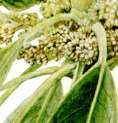
Daphniphyllum is consisted of "daphne"(old name of laurel)+ "phyllon"(leaf). As leaves are resemble to laurel.
macropodum;macropod, long handle, big axis
Himeyuzuriha
Daphniphyllum Teijsmanni
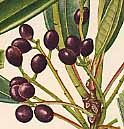
Teijsmanni;of Dutch horticulturist J.E.Teijsmann
Glochidion Forster
Kankonoki
Glochidion obovatum
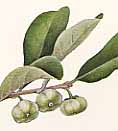
Glochidion means the thorn of which top is hoop-shaped.
obovatum;ovovate :"ovo" means egg.
Malloyus Lour.
Akamegashiwa
Mallotus japonicus
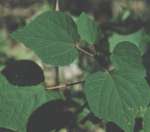
Mallotus means having long soft hairs ( mallotos ) . As the fruits of this tree have cilia.
japonicus;Japanese
Aleurites Forst.
Aburagiri
Aleurites cordata
Aleurites means wheat flour ("aleuros"). As it looks like covering with white flour as a whole.
cordata;cordate, heart-shaped
Sapium P.Br.
Nankinhaze
Sapium sebiferum
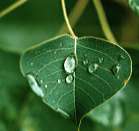
Sapium is meaning of sticky in old Latin name. As people used to produce bird lime from this tree.
sebiferum;sebiferous
To Top Content
Buxaceae
Buxus Linn.
Tsuge
Buxus microphylla var. japonica
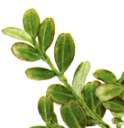
Buxus is derived from "puxas" (box) as the wood of this tree is used for boxes.
microphylla;micro(small)+phyllus(leaf), having small leaves
japonica;Japanese
To Top Content
Anacardiaceae
Rhus Linn.
Nurude
Rhus chinensis
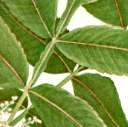
Rhus is derived from old Greek name rhous.
chinensis;indigenous to China
Hazenoki
Rhus succedanea
succedanea;substitute, imitative
Yamaurushi
Rhus trichocarpa
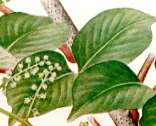
trichocarpa;tricho(stringy)+ carpos(fruit), fruit with hairs
Urushi
Rhus verniciflua
verniciflua;having varnish
To Top Content
Aquifoliaceae
Ilex Linn.
Inutsuge
Ilex crenata
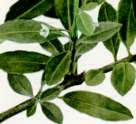
Ilex is the old Latin name of holly(Ilex aquifolium)or holly oak(Quercus Ilex).
crenata;crenate
Aohada
Ilex macropoda
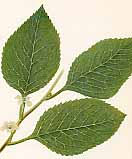
macropoda;long handle, big axis
podo is the prefix which means having handles.
Umemodoki
Ilex serrata
serrata;serrate
Soyogo
Ilex pedunculosa
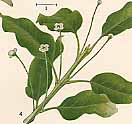
pedunculosa;peduncled, pedunculate
Kuroganemochi
Ilex rotunda

rotunda;rotundate, round
cf. rotund(English),round : rotunda(English) rotonde(French), a round building or hall especially with a dome
Mochinoki
Ilex integra
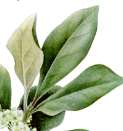
integra;entire, integral
Tarayou
Ilex latifolia
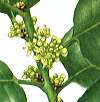
latifolia;broad leaved : lati (broad) + folia (leaf)
To Top Content
Celastraceae
Euonymus Linn.
Nishikigi
Euonymus alatus
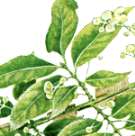
Euonymus is derived from "eu"(good)+ "onoma"(name). It means good reputation and also the God name of the Greek Myths.
alatus;alata, winged
Masaki
Euonymus japonicus
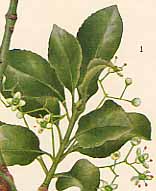
japonicus;Japanese
Mayumi
Euonymus Sieboldianus
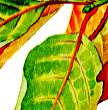
Sieboldianus;of Japanese plant researcher Siebold
Hirohatsuribana
Euonymus macropterus
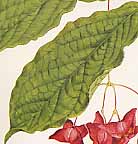
macropterus;big winged : ptero is the suffix which means wing.
Tsuribana
Euonymus oxyphyllus
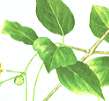
oxyphyllus;having acute leaves
Ootsuribana
Euonymus planipes
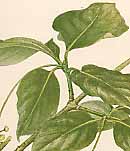
planipes;having a flat hole : "plan" means plain.
To Top Content
Aceraceae
Acer Linn.
Chidorinoki
Acer carpinifolium
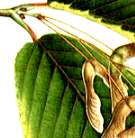
Acer is the Latin name of this species on account of splited leaf of this species. "Acer" has the meaning of to split or to tear.
carpinifolium; of the leaf resemble to Carpinus genus
Hananoki
Acer pycnanthum
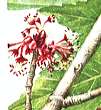
pycnanthum;pycn(dense)+antho(flower), with dense flowers
Hitotsubakaede
Acer distylum

distylum;two styles
Karakogikaede
Acer aidzuense
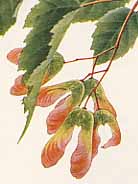
aidzuense;indigenous to Aizu (Tohoku District in Japan)
Urikaede
Acer crataegifolium
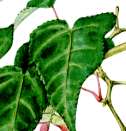
crataegifolium;like a small one-legged table for one person
Urihadakaede
Acer rufinerve
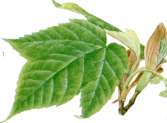
rufinerve;having reddish vein
Itayakaede
Acer Mono
Mono; mono
Akaitaya
Acer Mono var. Mayrii

Mayrii;of German dendrologist Mayr
It is called Beniitaya, too.
Kurobiitaya
Acer Miyabei
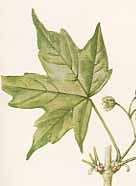
Miyabei;of Hokkaido plant researcher Dr. Kingo Miyabe
Kajikaede
Acer diabolicum
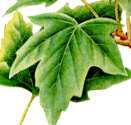
diabolicum;demoniac, big and wild
It is also called Onimomiji.
Kohauchiwakaede
Acer Sieboldianum
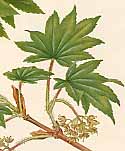
Sieboldianum;of Siebold
It is also called Itayameigetsu.
Hauchiwakaede
Acer japonicum
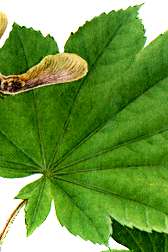
japonicum;Japanese
Ooitayameigetsu
Acer Shirasawanum

Shirasawanum;of dendrologist Miho Shirasawa
Irohamomiji
Acer palmatum

palmatum;palmate, digitated
Oomomiji
Acer palmatum subsp. amoenum
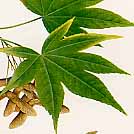
amoenum;amiable, lovable,lovely, charming
amour(French) amore(Italian) love, affection
Hinauchiwakaede
Acer tenuifolium
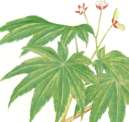
tenuifolium;thin leaf, fine leaf
Ogarabana
Acer caudatum subsp. ukurunduensis
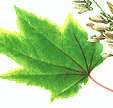
caudatum;caudate, tail-like
ukurunduensis;indigenous to Ukurund in Siberia
Tetsukaede
Acer nipponicum

nipponicum;indigenous to Honshu (Japan)
Asanohakaede
Acer argutam
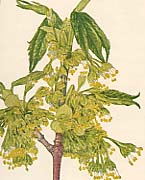
argutum;sharp, clear, acute
Minekaede
Acer Tschonoskii
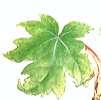
Tschonoskii;of Chonosuke Sugawa who collected Japanese plant for Maximowicz
Kominekaede
Acer micranthum
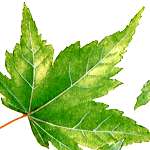
micranthum; "micr" + "anthus" :"micr" is the prefix which means small, "anthus" is the suffix which means flower
Megusurinoki
Acer nikoense
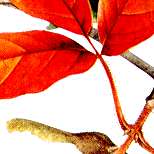
nikoense;indigenous to Nikko (Kantou District in Japan)
Mitsudekaede
Acer cissifolium
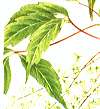
cissifolium;having leaves resemble to Cissus genus
To Top Content
Hippocastanacae
Aesculus Linn.
Tochinoki
Aesculus turbinata

Aesculus is derived from "aescare"(eat) as the fruits of this species are edible and suitable for feed.
turbinata;turbinate, top-shaped
To Top Content
Sabiaceae
Meliosma Blume
Awabuki
Meliosma myriantha
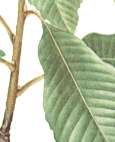
Meliosma is "meli"(honey)+ "osme"(odor). It means odor of honey.
myriantha;multiflowers : antho, flower
Yamabiwa
Meliosma rigida
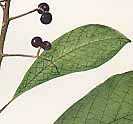
rigida;rigid, stiff
Miyamahahaso
Meliosma tenuis
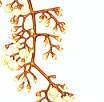
tenuis;thin, slender
To Top Content
Rhamnaceae
Zizyphus Mill.
Natsume
Zizyphus Jujuba var. inermis
Zizyphus is derived from Arabian name "zizonf". Greek name is "zizyphon".
Jujuba;Arabian name
inermis; without prickle, disarmed
Berchemia Neck.
Kumayanagi
Berchemia reacemosa
Berchemia is named after Dutch botanist B.Berchem.
reacemosa;racemose
Rhamnella Miq.
Nekonochichi
Rhamnella franguloides
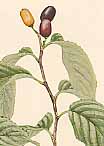
Rhamnella is the abbreviation of old Greek name "Rhamnus".
franguloides; resemble to Frangula genus
Rhamnus Linn.
Kuroumemodoki
Rhamnus japonica var. decipiens
Rhamnus is old Greek name. It means shrub with thorn. Celtic "ram" means shrub.
japonica;Japanese
decipiens;false, deceptive
Hovenia Thunb.
Kenponashi
Hovenia dulcis
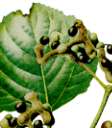
Hovenia is named after Dutch missionary D.v.d.Hoven.
dulcis;sweet
cf. dulcin(English),sweetening Dulcin : dulce(Spanish), sweet cake : dulcifier(French), soften sourness
To Top Content
Vitaceae
Vitis Linn.
Yamabudou
Vitis Coignetiae
Vitis is derived from vita(life).
Coignetiae;in memory of Coignet
Sankakuzuru
Vitis flexuosa
flexuosa;flexuosous, alternately bent in different directions
cf. flex ; to bend and move so as to stretch and loosen
Ampelopsis Michx.
Nobudou
Ampelopsis brevipedunculata var. heterophylla
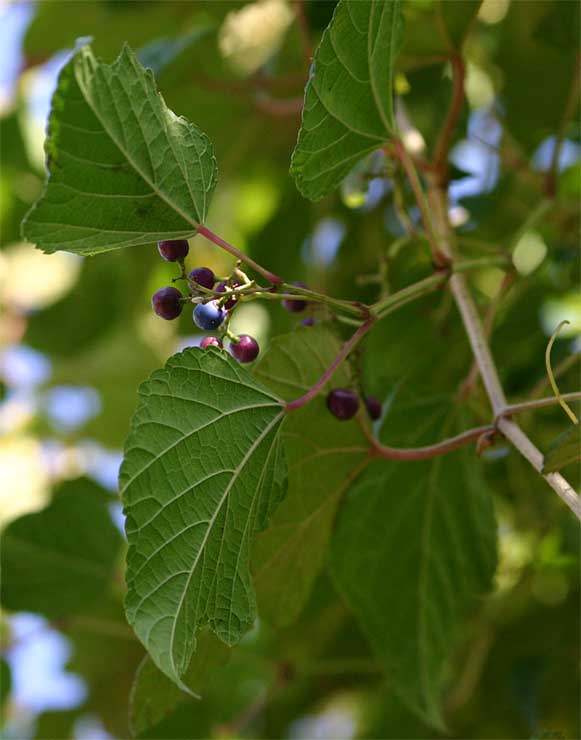
Ampelopsis is consisted of "ampelos"(grape)+ "opsis"(appearance); resemble to grape
brevipedunculata;short flower-stalk, brief-pedunculate
cf. brevi is a prefix which means short. : pendunculatus means having peduncle.
Parthenocissus Planch.
Tsuta
Parthenocissus tricuspidata
Parthenocissus is consisted of "parthenos"(virgin)+cissos(ivy).
Virgina creeper(English)、vigne-vierge(French)
tricuspidata;tri-cuspidate
tri means three. : cuspidatus means abruptly sharp pointed
To Top Content
Tiliaceae
Tilia Linn.
Shinanoki
Tilia japonica
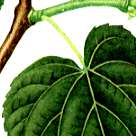
Tilia is derived from old Latin name "ptilon"(wing)as leaf like wing adheres to flower-stalk.
japonica;Japanese
Bodaiju
Tilia Miqueliana
Miqueliana;of Japanese plant Dutch researcher Miquel
Oobabodaiju
Tilia Maximowicziana
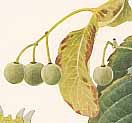
Maximowicziana;of Russian plant taxonomist Maximowiczw
cf. Indobodaiju : Ficus religiosa (Moraceae Ficus genus)
religiosa;religious, respectable
To Top Content
Malvaceae
Hibiscus Linn.
Mukuge
Hibiscus syriacus
Hibiscus is old greek name to big plant of Malva genus.
syriacus;Syrian
Hamabou
Hibiscus Hamabo
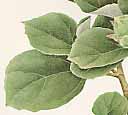
Hamabo;Japanese name Hamabo
To Top Content
Actinidiaceae
Actinidia Lindl.
Sarunashi
Actinidia arguta
Actinidia is derived from "aktis"(radiation) as a radiate stigma.
arguta;clear, sharp, sharply serrulate
It is called Shirakuchizuru, too.
Matatabi
Actinidia polygama
polygama;polygamous, (with male and female flower): poly is the prefix of meaning of many.
To Top Content
Theaceae
Camellia Linn.
Chanoki
Camellia sinensis
Camellia is named after Czechoslovakian missionary G.J.Kamell in 17 century.
sinensis;indigenous to China
Tsubaki
Camellia japonica
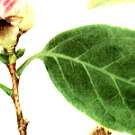
japonica;Japanese
Sazanka
Camellia Sasanqua
Sasanqua;Japanese name Sazanka
Stewartia Linn.
Natsutsubaki
Stewartia pseudo-camellia
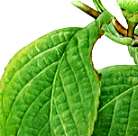
Stewartia is named after Sir Johon Stewart(1713-1792)in England.
pseudo-camellia ;resemble to camellia, suprious camellia : pseudo is the prefix which means suprious, false, sham, bogus.
Himeshara
Stewartia monadelpha

monadelpha;monadelphous, of a single stamen : mon or mono means one, single, alone.
Ternstroemia Mutis.
Mokkoku
Ternstroemia japonica

Ternstroemia is named after Swedish scientist C.Ternstroem
japonica ; Japanese
Cleyera Thunb.
Sakaki
Cleyera japonica

Cleyera is named after Dutch doctor and asian herb researcher A.Cleyer.
japonica;Japanese
Eurya Thunb.
Hisakaki
Eurya japonica
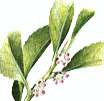
Eurya is derived from "eurys"(wide,big).
japonica ;Japanese
To Top Content
Flacourtiaceae
Idesia Maxim.
Iigiri
Idesia polycarpa
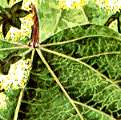
Idesia is named after Dutch plant collecter E.Y.Ides.
polycarpa;polycarpous, with many fruits : "poly"(many)+"carpos"(fruit)
To Top Content
Stachyuraceae
Stachyurus S. et Z.
Kibushi
Stachyurus praecox
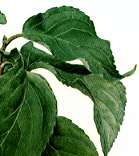
Stachyurus is consisted of "stachyus"(spica, spike)+ "oura"(tail)from the naming to spica suspended like tails.
praecox ;precocious, early
To Top Content
Thymelaeaceae
Daphne Linn.
Zinchouge
Daphne odora
Daphne is the name of Goddess Daphne in the Greek Myths.
odora ;odour, smell
cf. odour, odor(English)、odeur(French)、odore(Italian)
Diplomorpha Meissner
Ganpi
Diplomorpha sikokiana
Diplomorpha is consisted of "diplo"(double)+ "morphos"(form).
sikokiana; indigenous to Shikoku
Edgeworthia Meisn.
Mitsumata
Edgeworthia papyrifera
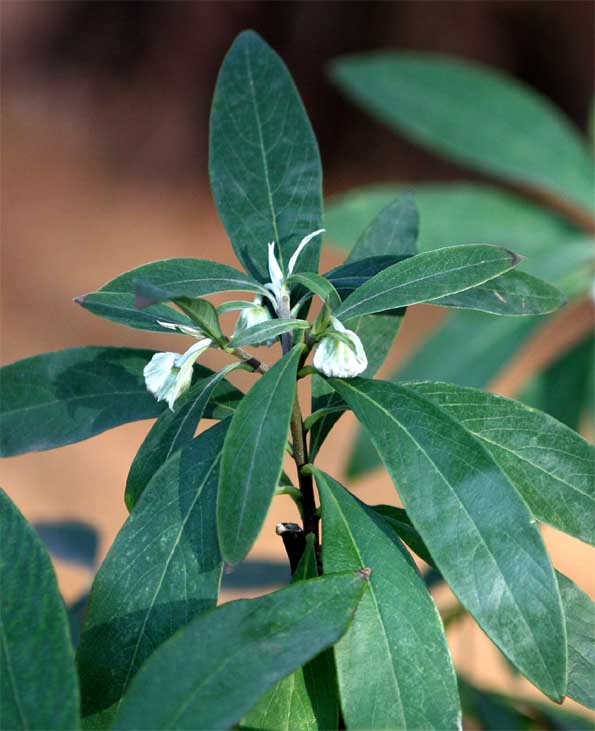
Edgeworthia is named after English botanist Mr. and Mrs. M.P.Edgeworth.
papyrifera;papyraceous
cf. papyrus(English, French) papyrus, paper
paper(English)、papier(French)、papel(Spanish)
To Top Content
Elaeagnaceae
Elaeagnus Linn.
Akigumi
Elaeagnus umbellata
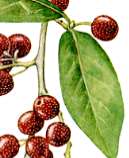
Elaeagnus is consisted of "elaia"(olive)+"agnos"(Vitex genus)as this tree has olive-like fruits and whitish leaves similar to Vitex genus.
umbellata;umbellate
Arimagumi
Elaeagnus Murakamiana
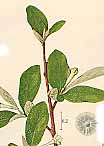
Murakamiana;of Murakami
Natsugumi
Elaeagnus multiflora
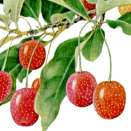
multiflora ;with many flowers, : "multi"+"flora"
Mamegumi
Elaeagnus montana
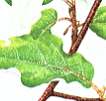
montana ;montane, mountainous
To Top Content
Lythraceae
Lagerstroemia Linn.
Sarusuberi
Lagerstroemia indica
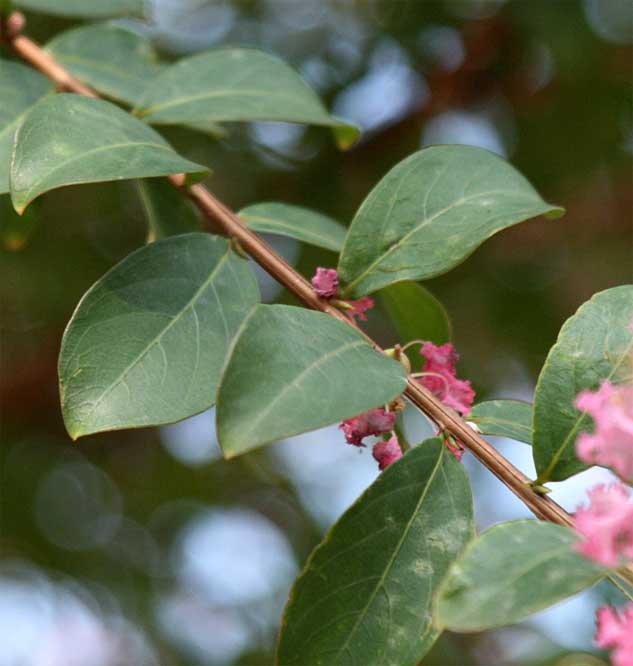
Lagerstroemia is named after Swedish M.Lagerstroem, a friend of Linne.
indica;Indian
To Top Content
Punicaceae
Punica Linn.
Zakuro
Punica Granatum
Punica means "punicus"(Carthago)as this tree is used to be thought as indigenous to Carthago.
Granatum;granatum
To Top Content
Araliaceae
Aralia Linn.
Taranoki
Aralia elata
Aralia is derived from vulgar name aralie in French possession Canada.
elata;tall
Dendropanax Decne. et Planch.
Kakuremino
Dendropanax trifidus

Dendropanax is consisted of "dendron"(tree)+ "Panax"(the genus name of Panax which means a panacea.) as this tree is resemble to Panax ginseng.
trifidus;3 lobed : cf. tri means 3.
Acanthopanax Miq.
Koshiabura
Acanthopanax sciadophylloides

Acanthopanax is consisted of "akantha"(thorn)+ Panax(Panax genus)as this tree has thorns resemble to Panax genus.
sciadophylloides;as the species with leaves like umbrella
Ukogi
Acanthopanax Sieboldianus
Sieboldianus; of Siebold
Oniukogi
Acanthopanax divaricatus
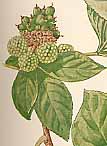
divaricatus;divaricate, divergent
Evodiopanax Nakai
Takanotsume
Evodiopanax innovans
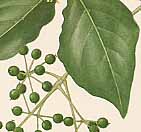
Evodiopanax is consisted of "Evodia"(the genus name of Euodia : eu+odia is good odor)+ "Panax"
(the genus name of Panax which means a panacea). It means Panax tree of which leaves are resemble to Euodia genus.
innovans;innovate, with new shoots, germinate
Kalopanax Miq.
Harigiri
Kalopanax septemlobus

Kalopanax is consisted of "kalos"(beautiful)+" Panax"(Panax genus). It means Panax genus of which leaves has beautiful lobes.
septemlobus; 7-lobed, : sept means 7.
To Top Content
Cornaceae
Aucuba Thunb.
Aoki
Aucuba japonica
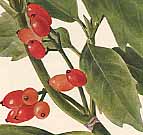
Aucuba is derived from Japanese dialect Aokiba
japonica;Japanese
Helwingia Willd.
Hanaikada
Helwingia japonica
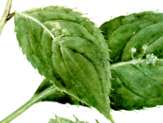
Helwingia is named after German missionary G.A.Helwing.
japonica;Japanese
Cornus Linn.
Mizuki
Cornus controversa
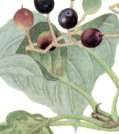
Cornus is derived from "cornu"(horn) as the wood is hard.
controversa ;controversial, suspicious
cf. controversial(English)、controversable(French)
controvercy (English)、controverse (French)
Kumanomizuki
Cornus macrophylla
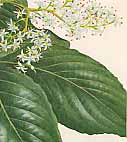
macrophylla;macro(large)+ phylla(leaf)、with large leaf
Sanshu
Cornus officinalis
officinalis;officinal, official
cf. officinal(English, French)
It is called Harukoganebana.
Yamaboushi
Cornus Kousa

Kousa;a dialect Kusa in Hakone District
Amerikayamaboushi
Cornus florida
florida;of Florida in U.S.A
It is called Hanamizuki in general.
To Top Content
Clethraceae
Clethra Linn.
Ryoubu
Clethra barbinervis

Clethra is diverted from the old Greek name of alder as the leaf of this tree is resemble to that of alder.
barbinervis;barbate on nerves
To Top Content
ANGIOSPERMAE (Ⅲ) End
1 GYMNOSPERMAE
2 ANGIOSPERMAE (Ⅰ)
3 ANGIOSPERMAE (Ⅱ)
4 ANGIOSPERMAE (Ⅳ)
5 Top Content
6 Japanese Name Index
7 Scientific Name Index
8 Tree Homepage Links